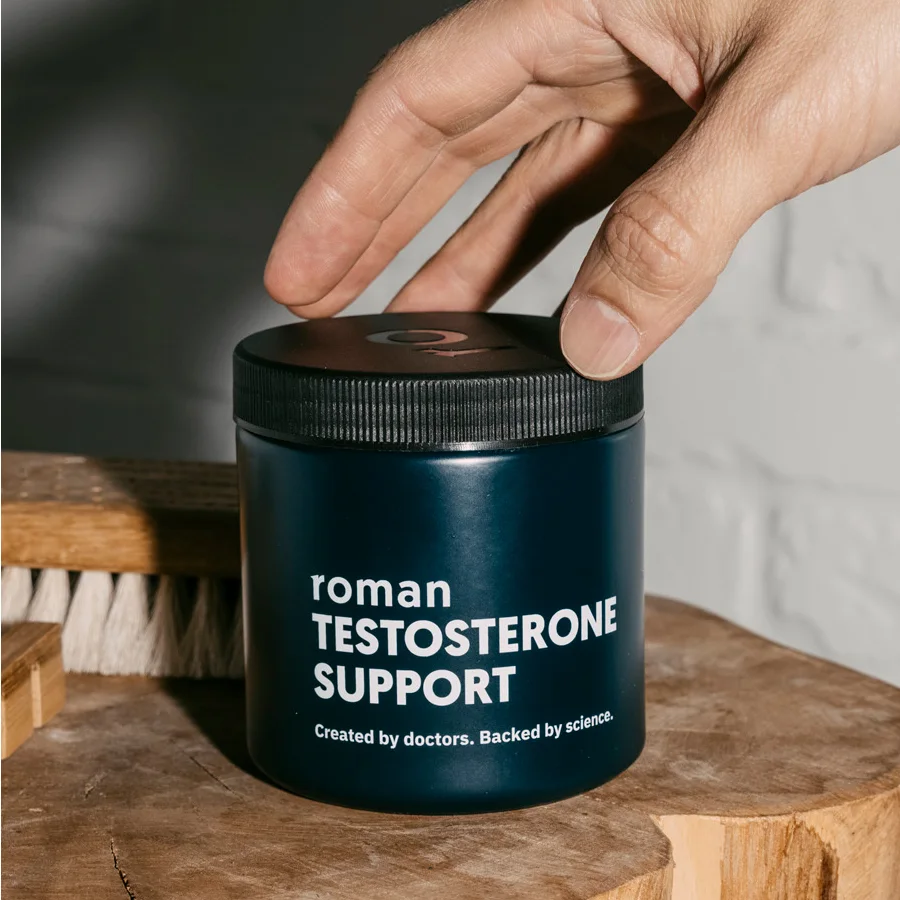Here's what we'll cover
Here's what we'll cover
Here's what we'll cover
People often think of testosterone as a synonym for “manliness”–aggression, strength, and even anger may come to mind. But this pop culture understanding of testosterone is not correct. All people, regardless of gender or sexual identity, require testosterone to function. But what about dihydrotestosterone, or DHT? DHT is a hormone most commonly mentioned in ads for hair loss supplements, but it’s much more than that. So, what is DHT? Continue reading to learn more about the DHT hormone.
What is DHT?
Dihydrotestosterone (DHT) is a primary “male” sex hormone (androgen) that plays a critical role in biological male’s sexual development. In the womb, the DHT hormone is responsible for developing sex organs, like the penis, scrotum, and prostate (Kinter, 2022).
During puberty, DHT’s primary role is to encourage the growth of facial hair and body hair (including pubic hair and under-arm hair). It also helps with voice-deepening and increased muscle mass. In adulthood, DHT plays a role in certain medical conditions, like male pattern hair loss (otherwise known as androgenic alopecia), hirsutism (abnormal hair growth in females), benign prostatic hyperplasia (BPH), and prostate cancer (Kinter, 2022).
Testosterone and DHT are both androgens, but the DHT hormone is much more potent. It binds to androgen receptors more strongly and sticks around longer than testosterone.
DHT is actually made from testosterone by 5-alpha-reductase, an enzyme mainly present in the skin, prostate, and liver. But only 10% of circulating testosterone is turned into DHT (Kinter, 2022).
DHT and hair loss
There are several different causes of hair loss—some hair loss is caused by certain illnesses, while other types of hair loss may stem from vitamin deficiencies. However, the most common cause of hair loss is androgenic alopecia (AGA), more commonly known as male pattern baldness. Half of all biological men will start losing their hair by age 50, and the problem continues to worsen with age (Ho, 2022).
DHT plays an important role in male pattern hair loss. People with AGA tend to be genetically predisposed to having hair follicles that are more sensitive to androgens like DHT, along with higher levels of DHT. DHT shortens the hair follicle’s growth stage in the scalp, resulting in thinner and shorter hairs. These miniaturized hairs eventually lead to visible hair loss in a recognizable pattern (Ho, 2022).
AGA starts above the temples and at the vertex (crown) of the head, leading to the characteristic receding hairline. Hair loss will continue until only a thin rim of hair at the sides and rear of the head will be left (think Danny DeVito.)
DHT blockers
We’ve answered the question, what is DHT? Now, what can we do to stop it from causing problems?
There are two main treatments on the market that block the enzyme that makes DHT: finasteride (brand name Propecia or Proscar) and dutasteride (brand name Avodart). Both medications are oral tablets and are approved treatments for BPH, but the FDA only approves finasteride to treat male pattern hair loss (although the dose differs depending on if you’re using it for BPH or hair loss).
Finasteride Important Safety Information: Read more about serious warnings and safety info.
How well do these medications work? Studies show that finasteride can slow balding and hair loss in more than 80% of participants and stimulate hair growth in over 60% of participants (DailyMed, 2021). Just keep in mind that it takes a few months to see results.
What about DHT-blocking shampoos? Unfortunately, there’s no solid evidence that any shampoo blocks DHT in the scalp. Some shampoos, like products containing ketoconazole, have been found to help with hair loss. Scientists theorize that ketoconazole may block testosterone synthesis, thereby decreasing DHT production. But more research is needed (Fields, 2020).
The only FDA-approved topical medication for hair loss is minoxidil (brand name Rogaine). This medication does not block DHT. Rather, it treats hair loss by stimulating increased blood flow and nutrients to the hair follicles.
If you’re experiencing hair loss, you’re not alone. While hair loss may be an unwanted experience for many, you might be a candidate for a treatment to promote hair regrowth. Make an appointment with your healthcare provider to explore safe and effective treatment options for you.
DISCLAIMER
If you have any medical questions or concerns, please talk to your healthcare provider. The articles on Health Guide are underpinned by peer-reviewed research and information drawn from medical societies and governmental agencies. However, they are not a substitute for professional medical advice, diagnosis, or treatment.
References
DailyMed. (2021). PROPECIA- finasteride tablet, film coated. Retrieved from https://dailymed.nlm.nih.gov/dailymed/drugInfo.cfm?setid=4e07adb4-7807-47d3-b9a9-2332a3047410
Fields, J. R., Vonu, P. M., Monir, R. L., et al. (2020). Topical ketoconazole for the treatment of androgenetic alopecia: A systematic review. Dermatologic Therapy , 33(1), e13202. doi:0.1111/dth.13202. Retrieved from https://pubmed.ncbi.nlm.nih.gov/31858672/
Ho, C. H., Sood, T., & Zito, P. M. (2022) Androgenetic alopecia. StatPearls. Retrieved on Feb. 16, 2023 from https://www.ncbi.nlm.nih.gov/books/NBK430924/
Kinter, K. J. & Anekar, A. A. (2022). Biochemistry, dihydrotestosterone. StatPearls . Retrieved on Feb. 16, 2023 from https://www.ncbi.nlm.nih.gov/books/NBK557634/
Phillips, T. G., Slomiany, W. P., & Allison, R. (2017). Hair loss: common causes and treatment. American Family Physician, 96 (6), 371–378. Retrieved from https://www.aafp.org/afp/2017/0915/p371.html










